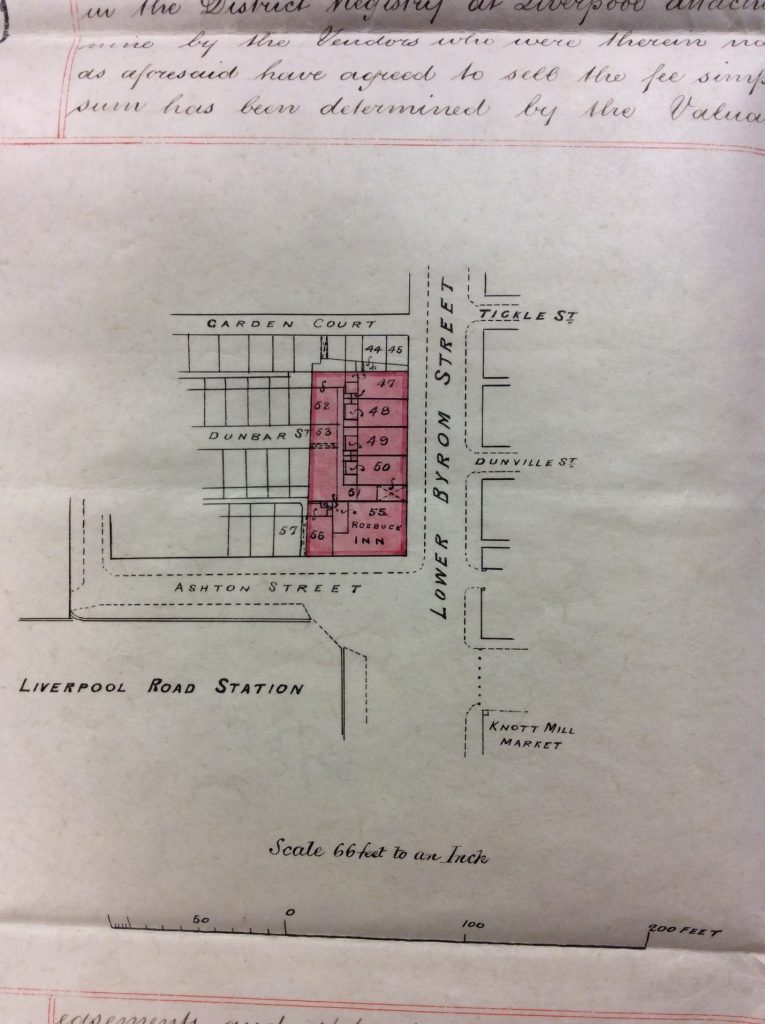Well, New Warehouse is actually the historic name for this building. For over 150 years the museum site served the North West as a railway station for goods and livestock (especially the infamous pigs of Liverpool Road Station). The London North Western Railway Company ran the station from 1846 until 1922, and it was under this management that the station expanded to house more goods.
After a ‘stupendous’ fire in 1866 that destroyed two cotton warehouses, great changes were made to the station, which first opened in 1830. Thanks to the bravery of volunteer fire fighters, the original timber-framed warehouse was saved, and the Liverpool and Manchester Railway (1830–44) passenger station was unaffected.
A new viaduct was erected in the void left by the cotton warehouses; at the museum we call it the Pineapple line—a reference to the Georgian period Pineapple Inn that stood beneath the viaduct on Water Street until 1986, when this too was destroyed by fire.
The station also gained a bonded store, the warehouse now in the St John’s development. However, more room was still needed, especially to accommodate growing traffic for the Great Western Railway, which shared facilities at Liverpool Road from 1858 onwards. This is the reason why the museum named this warehouse after the Great Western Railway. Yet, the building was not called Great Western Warehouse at the time. For many years construction was delayed, and it was referred to as New Warehouse in numerous plans.
As I have researched the history of the station, I’ve encountered records from the 1870s to the 1910s naming the building New Warehouse and sometimes Byrom Street Warehouse. Whilst not every building has its former names (for example the Power Hall was called Shipping Shed), the museum wishes to highlight the historic significance of our unique site, so the original name has been reinstated, and now we can reflect on our origins as a freight station for the Cottonopolis, run by the London and North Western Railway.
Here is an example from the Archive about the warehouse; a poignant reminder of the human cost of industrial expansion is the number of houses demolished to make way for the New Warehouse. Hundred of tenants lost their homes when they were sold to the railway company for construction, such as those on Lower Byrom Street, coloured red here:

Science Museum Group © The Board of Trustees of the Science Museum